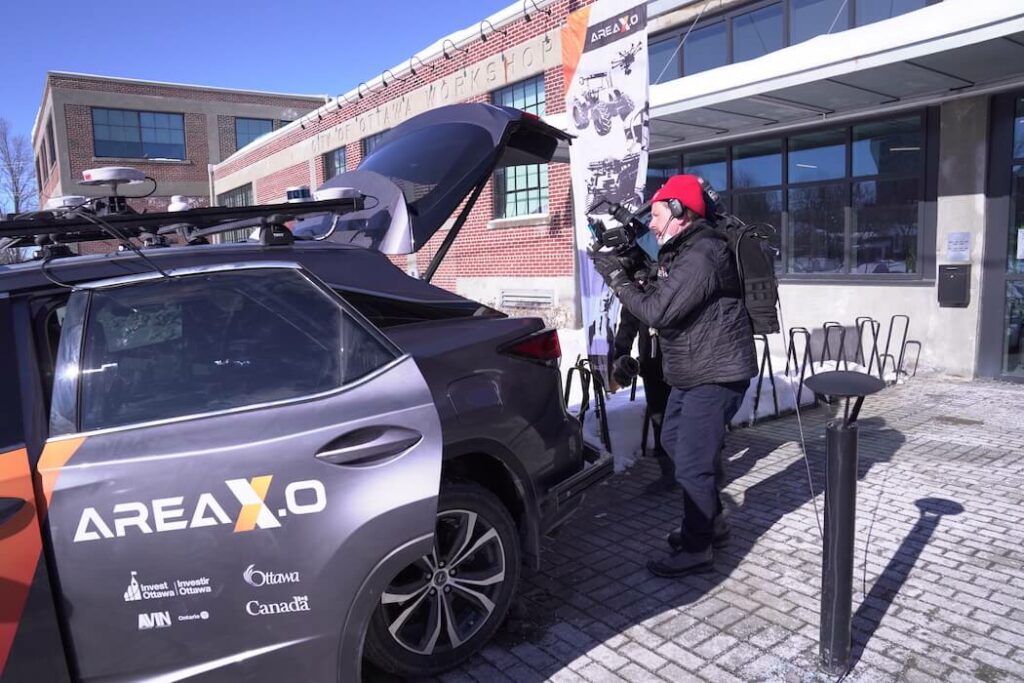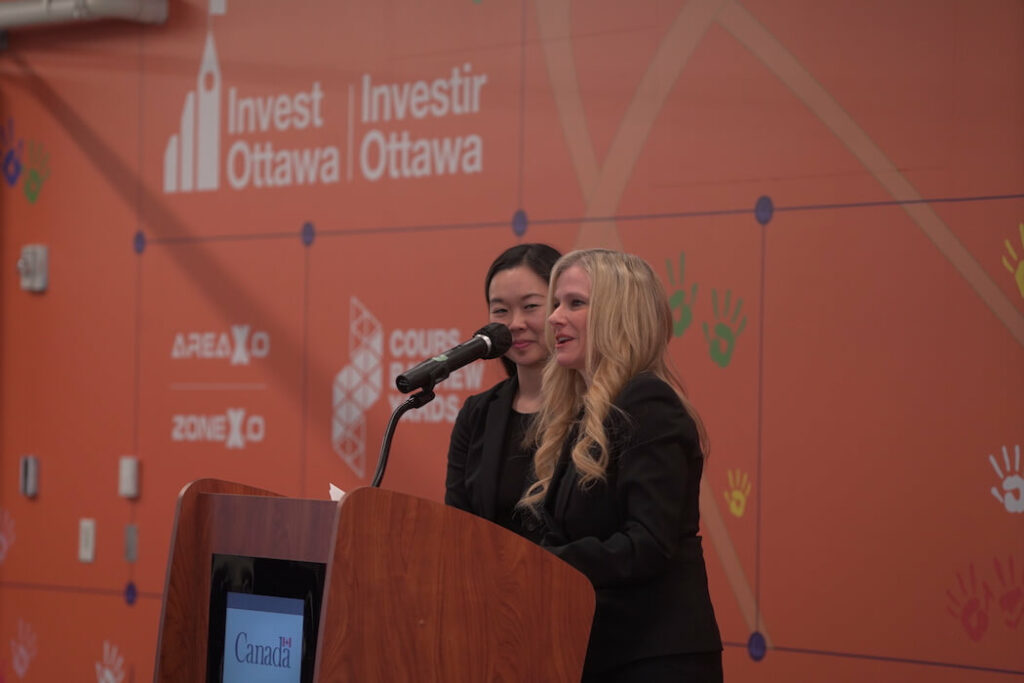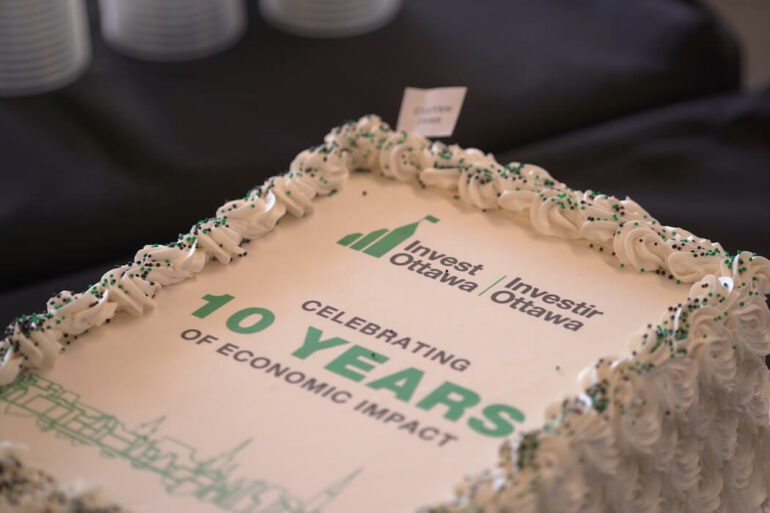As the local tech community came together to celebrate Invest Ottawa’s tenth year, Ottawa’s economic development agency for innovation received a significant anniversary present from the federal government.
Filomena Tassi, the minister responsible for the Federal Economic Development Agency of Southwestern Ontario (FedDev), took to the stage and announced $5.4 million in federal funding for Invest Ottawa’s smart mobility R&D complex, Area X.O. The testing grounds provide a space for development in areas such as autonomous vehicles, smart agriculture, and unmanned drones.
“The effort that Invest Ottawa is providing us is going to reach other SMEs.”
– Fahed Hassanat, Sensor Cortek
The federal funding comes alongside an additional $1.25 million of in-kind contributions in technology, expertise, and services from partners including Ansys, a US-based engineering simulation software company. Invest Ottawa expects the totality of the funding to bolster Area X.O’s simulation capabilities, catalyze smart mobility partnerships, and commercialize smart mobility solutions.
Area X.O initially opened in May 2019 as the “Ottawa L5 Connected and Autonomous Vehicle Test Facility,” featuring a 16 kilometre track and facilities for smart mobility development. This week’s funding announcement marks the second time since the facility’s opening that it has received a funding boost from FedDev. In October 2020, Invest Ottawa received $17 million to expand the site, $7 million from FedDev, and rebranded the facility to Area X.O.
“This project will support 140 SMEs, 745 jobs, and commercialize up to 40 new products, services, and processes,” Tassi said in front of the gathered crowd on Tuesday. “Area X.O is a unique regional asset, supporting Canadian-made innovations and attracting foreign direct investment.”

Fahed Hassanat is COO and head of engineering at Sensor Cortek, a company working within the Invest Ottawa framework and using Area X.O to train its automated vehicle technology. He stood outside Bayview Yards, the innovation hub operated by Invest Ottawa, introducing himself and his car’s various sensors to those entering the anniversary event.
Hassanat explained that the location of Area X.O provides needed data for his work, given he is known as “the storm chaser” for testing his autonomous car in the worst of Ottawa’s weather conditions.
“This is a bottleneck because the limited deployment of autonomous vehicles is happening in limited areas where the weather is nice, but as soon as you take them out of their comfort zone it becomes very challenging for [the car] to drive autonomously,” Hassanat said. “Our work will permit autonomous vehicles to last longer in [low] visibility conditions and operate in places like Ottawa and Canada in general.”
Hassanat added that Area X.O receiving more funding is significant for Sensor Cortek’s smart intersection project, as the company can gather new data by potentially acquiring additional “higher grade” sensors, trying different sensors out, and deploying them in different areas for study.
“The effort that Invest Ottawa is providing us is going to reach other SMEs,” Hassanat said. “When you empower them, nurture them, they become strong players and influence the Canadian technology sector as a key player in the world.”
Area X.O is just one piece of Invest Ottawa’s incubation, acceleration, and scale-up work. Over the past 10 years, Invest Ottawa says it has supported almost 14,000 companies, facilitated more than 14,700 jobs, and provided over 75,730 hours of advisory services to its clients since its inception in 2013.

Nick Quain, VP of venture development at Invest Ottawa, began the event seated in his office surrounded by a manifestation of Invest Ottawa’s work. His office walls are covered floor to ceiling in dozens of small pins that each represent a company under Invest Ottawa’s umbrella. Each company’s pin is grouped in classes, from the crowded “early stage” ideas wall to the sparse “late scale” business wall featuring the likes of Shopify and Kinaxis.
Quain reflected on Ottawa’s tech evolution since his days as an entrepreneur: when he founded a B2C mobile application software company in 2000, Ottawa was a telecommunications-focused town that Quain said didn’t understand his needs. The VP added that it has been fun to watch Ottawa’s new generation of software founders and highlighted Invest Ottawa’s role in the city’s economic transformation.
“Invest Ottawa is a big part of shining a light on the success stories that are happening,” Quain said. “If founders are going to stay somewhere and build their roots, they need to feel like they are part of a tribe and supported.”
Michael Tremblay, president and CEO of Invest Ottawa, echoed the sentiment when it came to Invest Ottawa’s ability to bring its partners in businesses, post-secondaries, and regulators together to deliver local economic relief.
“When I look at it, we’ve got this natural collaborative structure and I like to think of Invest Ottawa as the catalyst for that work,” Tremblay said. “We just act as the glue, we bring people together.”
Area X.O’s new funding going towards simulation will ease current bottlenecks due to demand, said Tremblay. He noted that the demand for time with Area X.O is more than they can handle at the moment, so simulations will help take the load off time-intensive initial physical trials.
“Something that slows us down is it takes a lot of time physically testing something in a physical environment, and not all the tests are suitable for a physical environment,” Tremblay said. “Simulation is the next best thing to do, it’s going to help us to be more refined by the time [a project] hits the physical area.”


